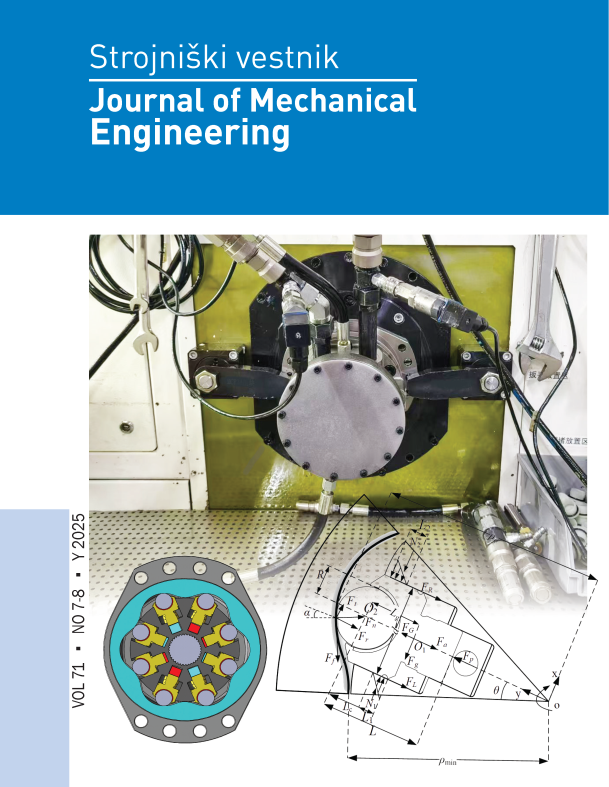Differential Tooth Surface Modification Method for Reducing Vibration in Spiral Bevel and Hypoid Gears
DOI:
https://doi.org/10.5545/sv-jme.2024.1249Keywords:
spiral bevel and hypoid gears, differential tooth surface modification, dynamic simulation, angular acceleration, meshing forceAbstract
To address the issue of increased gear noise in electric vehicle drivetrains due to higher rotational speeds, a differential tooth surface modification method for spiral bevel and hypoid gears is proposed. A mathematical model for spiral bevel and hypoid gears is established using the vector method. Based on this model, a finite element dynamic model of the gears is developed through secondary development using Adams software. A tooth surface modification approach involving parameters (bias factor and profile separation factor) varying according to a sinusoidal function is investigated, alongside its impact on micro-topography of the tooth surface. A comparative simulation analysis is performed to evaluate the sinusoidal parameter design method against traditional modification methods, emphasizing gear angular acceleration and meshing force under various operating conditions. The results demonstrate that the differential modification method achieves a significant reduction in the first three orders of meshing frequencies under almost all conditions, with maximum reductions in the first-order frequency amplitudes of the gear angular acceleration and meshing force reaching 22.98 % and 36.05 %, respectively. This confirms the method effectiveness in reducing gear vibration and noise. The proposed differential modification method for spiral bevel and hypoid gears offers a novel approach for vibration and noise mitigation, offering valuable technical support for designing and manufacturing of high-performance electric vehicles.
Downloads
Published
How to Cite
Issue
Section
License
Copyright (c) 2025 The Authors

This work is licensed under a Creative Commons Attribution 4.0 International License.


